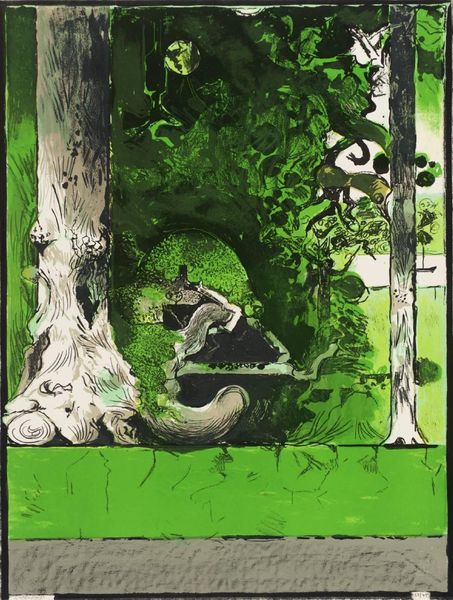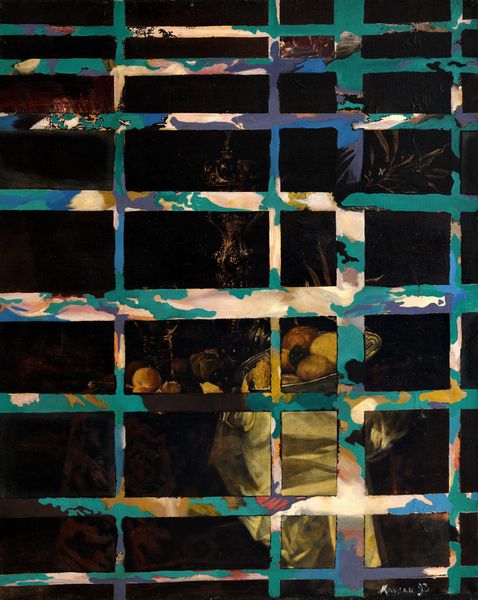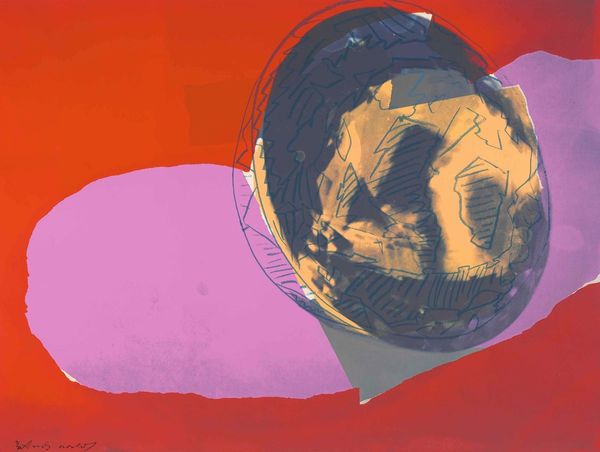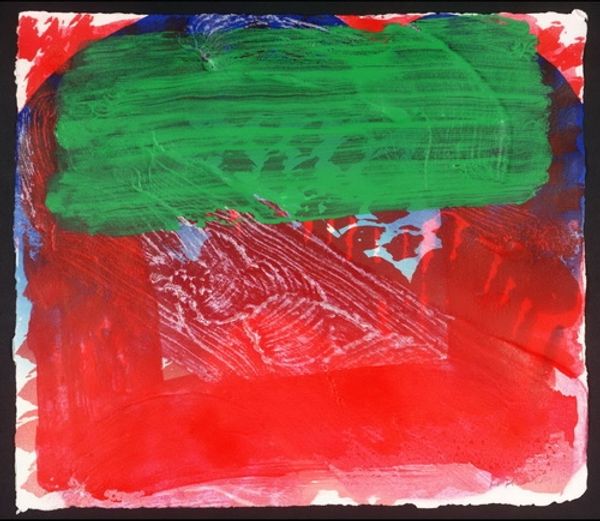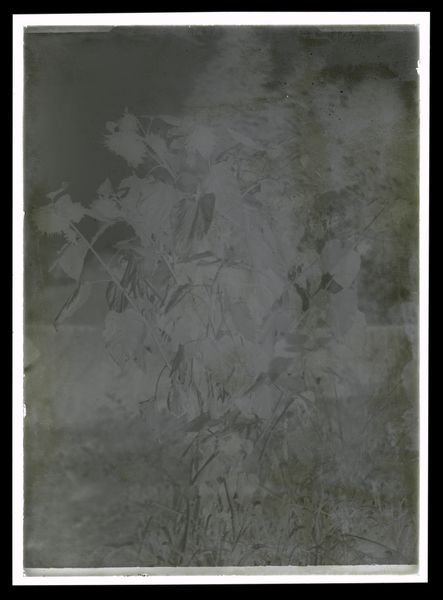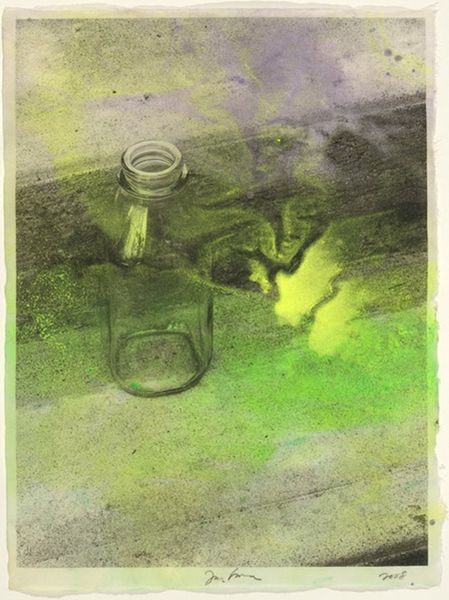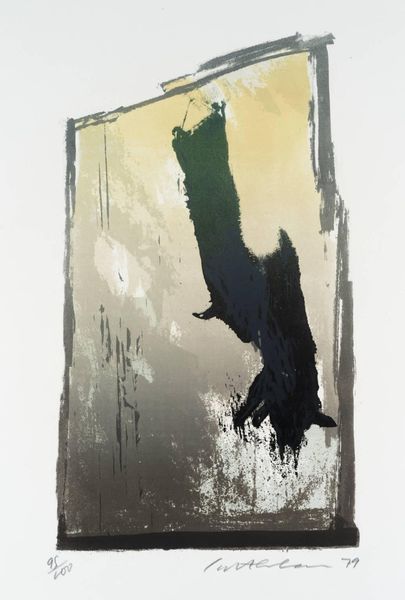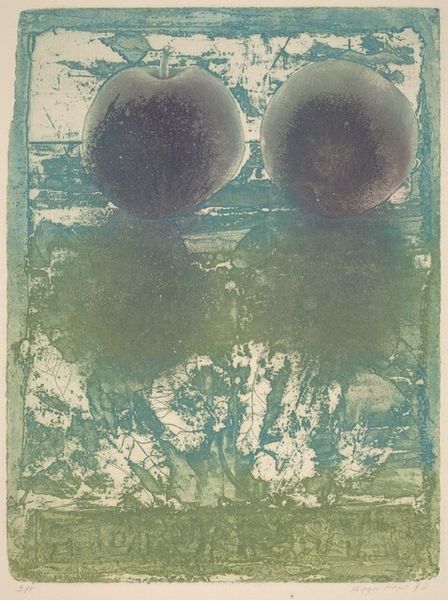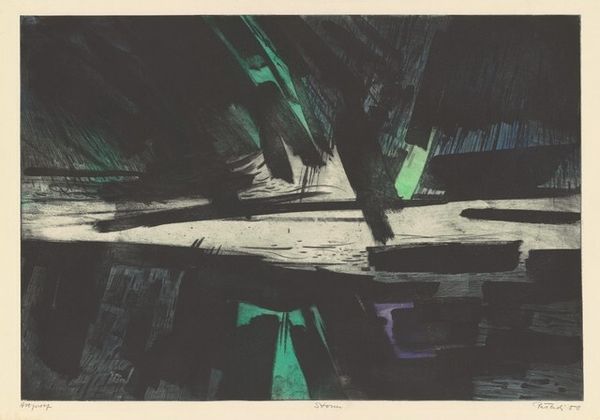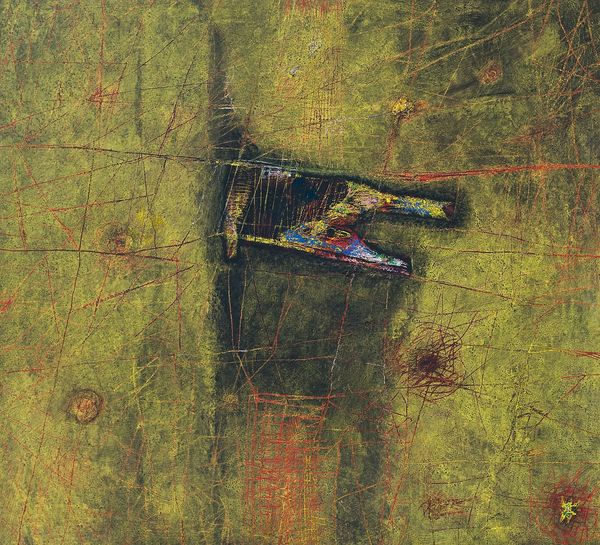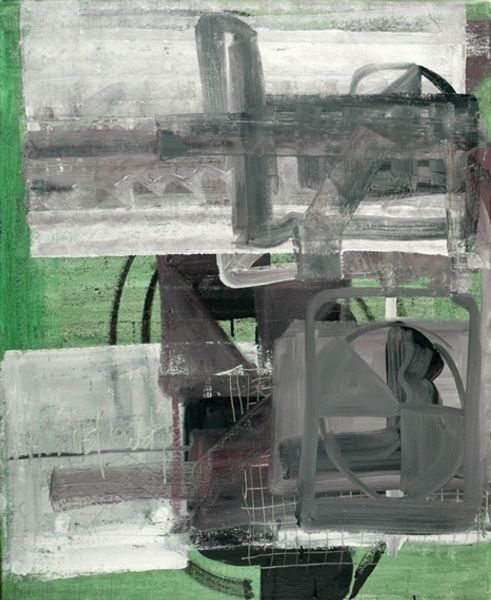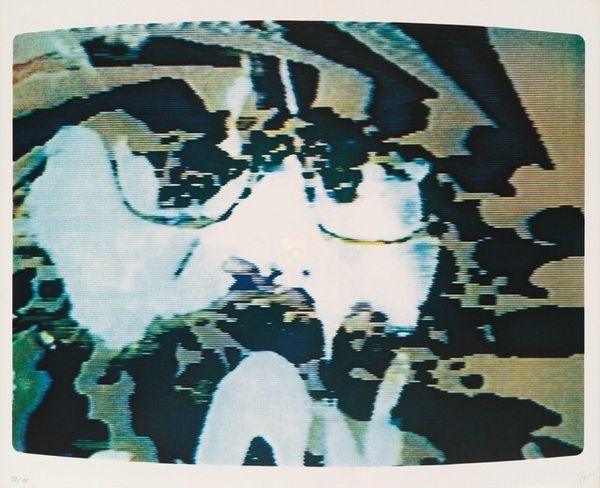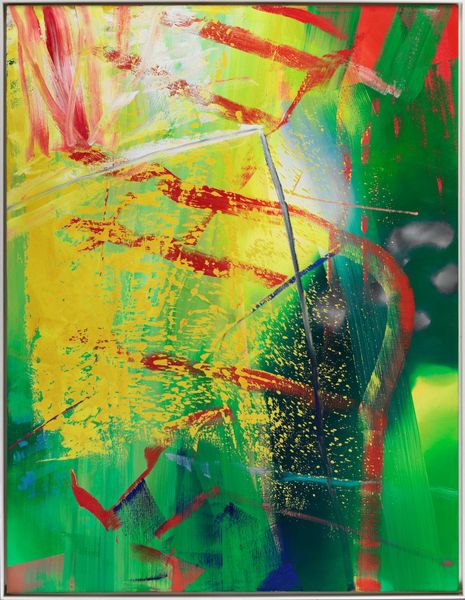
Dimensions: support: 276 x 326 mm
Copyright: © Howard Hodgkin | CC-BY-NC-ND 4.0 DEED, Photo: Tate
Curator: Hodgkin’s "Rain" evokes a very specific, almost tactile, sense of precipitation. The dark grays and swathes of green suggest something both cleansing and melancholic. Editor: It's interesting that you call it melancholic. For me, the vibrant green speaks more to renewal and the life-giving aspects of rain, especially in a world facing climate crisis. Curator: That's a valid point. The green definitely holds potential, but I can't help but see how the layering creates a sense of enclosure, perhaps reflecting anxieties around environmental issues. Editor: Indeed, the bold brushstrokes almost feel like barriers. Hodgkin often explored themes of memory and experience, so perhaps we’re seeing rain as a symbol of both trauma and healing. Curator: It would be good to understand the societal context and his intentions in terms of broader environmental issues. Editor: Understanding those intentions might add new layers to the symbolism of the natural forces at play. Curator: Absolutely.
Comments
Join the conversation
Join millions of artists and users on Artera today and experience the ultimate creative platform.
tate 4 months ago
⋮
Rain is a print published by the Alan Cristea Gallery, London in an edition of fifty. It is one of a series of nine images that Hodgkin produced during a concentrated bout of activity in 2000 and 2001. It was printed by Jack Shirreff (born 1943) at the 107 Workshop, near Bath in England. The Tate copy is number eight in the edition. Hodgkin has made prints since the early 1960s and he and Shirreff first worked together in 1990, when he produced a number of prints inspired by exotic travel and travel posters (Tate P20058-P20062). He worked with Shirreff again in 1995, producing an edition of prints entitled Venetian Views (Tate P20166-P20169). They developed a close working relationship, Shirreff printing and hand-colouring all these editions. Rain is a small, brightly coloured image that evokes the gestural immediacy of Hodgkin's gem-like paintings. It combines lift-ground aquatint and carborundum, with hand-colouring by Shirreff. Hodgkin has used an assistant to hand-colour his prints since the late 1970s when he worked on Nick 1977 (Tate P77044) with Maurice Payne at Petersburg Press. Hand-colouring has since become an integral aspect of the artist's print-making technique. The process of using a 'second' hand to colour the printed image was partly suggested by the art historian, Herbert Read (1893-1968). Hodgkin remembers having read of the anonymous decorators of pottery, and the memory influenced his practice. However, he no longer recollects the source of Read's description. According to Hodgkin, the artist is often tempted to alter an image through successive reinterpretations. In contrast, an assistant can be employed, almost as a mechanical tool, to duplicate marks. The 'original' of such hand-repeated marks is always made by an assistant under very close supervision by the artist. (All references from unpublished Tate interview.) Rain was printed from three plates in various tones of grey and hand-coloured in green by Shirreff under the artist's guidance. Hodgkin layered the image with the pale grey printed marks describing gestural sweeps, daubings and ink spills. These are overlaid by a frame-like, hand-painted pea green wash. The shadowy, grey markings are visible through the painted green border. The green frame parallels the characteristic frame-within-a-picture device of Hodgkin's paintings where the actual frame is often incorporated pictorially. The print's layered, gestural quality evokes the slow accretion of painterly layers characteristic of Hodgkin's paintings. This results from his experimental manipulation of the printing processes in conjunction with hand-colouring. He used lift-ground aquatint to create the spontaneous, painterly printed marks that form the base of the image. The process enabled him to paint directly onto the plate. When the plate was printed, the ink mirrored the original painted mark. Hodgkin also used carborundum, a printing technique that gives the image a pitted, textured quality. The technique involves applying, with brush or hand, a stodgy carborundum paste that dries on the plate. When inked and printed the carborundum partly embosses the paper, giving the print a relief-like character. Like many of Hodgkin's prints and paintings, the title of the work alludes to an event in the artist's life. Hodgkin draws his inspiration from the memory of personal experiences and moments in time: a place visited, a meal eaten, a friend observed, a mood experienced or a moment recalled. These memories, moods and experiences are then imaginatively transformed, the prints and paintings evoking the depth and richness of lived experience. Further Reading:Howard Hodgkin: Small Prints, exhibition catalogue, Alan Cristea Gallery, London 2001, reproduced (colour) pp.17-18Howard Hodgkin: Venetian Views 1995, exhibition catalogue, Alan Cristea Gallery, London 1995Howard Hodgkin: Prints 1977-1983, exhibition catalogue, Tate Gallery 1985 Imogen Cornwall-Jones April 2002
